+39 329 448 3644 info@rusrim.com +39 389 59 75 184
Sightseeing car excursion of Rome
Private car tour in Rome – english guide with car from Eur 50 for pax Price for the tour of 6 pax Private tour 3H + 1 H free = 4H or Total 200Eur for the tour in case of 4pax include guide, car and entrances
Our guides are also graduates having obtained painting, dance, music or literature diplomas and are active artists working in Italy.
VIDEO of ROME SIGHTSEEING CAR TOUR – MONUMENTS OF ROME
ROMA Aria Italiana modale Stile `500 by Adel Karanov – Soprano Mila Pavlova
Exclusive excursions in Rome
A one-day guided excursion experience lasting minimum 3 hours or daily tour BY CAR for groups of up to 5 people.
Tour of main squares, fountains, churches and museums of Rome selected for you. The tour includes short walks on foot for visits of monuments and stops for taking pictures and a lunch or a coffee break.The sequence of monuments and their choice will display a historical and artistic evolution of the Eternal City. As well as a perfect overview of the different types of styles in the arts of architecture and sculpture and painting. Many monuments, private art collections, entrances to palaces are offered exclusively by RUSRIM. tour guides.
Rome private tours – VIDEO by Franco Buttiglieri music by Adel Karanov private guide in Rome
Inside the guided tour experience you can choose to visit important archaeological areas like dungeons, catacombs, ancient walls, sacred places and secret areas accessible to limited number of people. The collection of Greek and Roman classical sculptures offering sculptures of emperors, athletes, mythological figures and ancient deities can be viewed in an exclusive way. During the guided tour you can have a break for tasting of local food preferred by Roman elite. In summer the most popular organic ice cream shop in Rome is a place to drop in.
Rome individual excursion – list of monuments
Rome private excursion with art guide and car
Piazza di Spagna -Spanish square
is one of the most famous squares in Rome. In the middle of the square is the famous Fontana della Barcaccia, dating to the beginning of the baroque period, sculpted by Pietro Bernini and his son, the more famous Gian Lorenzo Bernini.The side near Via Frattina is overlooked by the two façades (the main one, designed by Gian Lorenzo Bernini, and the side one created by Francesco Borromini) of the Palazzo di Propaganda Fide.
Pantheon
commissioned by Marcus Agrippa during the reign of Augustus (27 BC – 14 AD). The present building was completed by the emperor Hadrian and probably dedicated about 126 AD. He retained Agrippa’s original inscription, which has confused its date of construction.
Piazza Navona square
It is built on the site of the Stadium of Domitian, built in 1st century AD, and follows the form of the open space of the stadium.
It features important sculptural and architectural creations: in the center stands the famous Fontana dei Quattro Fiumi or Fountain of the Four Rivers (1651) by Gian Lorenzo Bernini, topped by the Obelisk of Domitian, brought in pieces from the Circus of Maxentius; the church of Sant’Agnese in Agone by Francesco Borromini, Girolamo Rainaldi, Carlo Rainaldi and others.
Piazza Navona 3D – Private car tour of Rome with local guide
Piazza Barberini square – Fontana del Tritone or
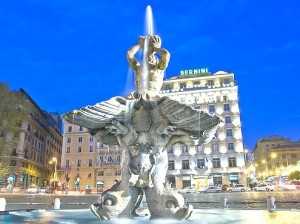 Triton Fountain (1642–3) sculpted by Bernini. – Palazzo Barberini It houses the Galleria Nazionale d’Arte Antica. The sloping site had formerly been occupied by a garden-vineyard of the Sforza family, in which a palazzetto had been built in 1549. The sloping site passed from one cardinal to another during the sixteenth century, with no project fully getting off the ground. When Cardinal Alessandro Sforza met financial hardships, the still semi-urban site was purchased in 1625 by Maffeo Barberini, of the Barberini family, who became Pope Urban VIII. The rise of the Barberini, one of the most powerful of the Roman papal families, is closely connected to the ecclesiastical career of Cardinal Maffeo Barberini, the fiarure Pope, who was elected with the name Urban VIII in 1623.
Triton Fountain (1642–3) sculpted by Bernini. – Palazzo Barberini It houses the Galleria Nazionale d’Arte Antica. The sloping site had formerly been occupied by a garden-vineyard of the Sforza family, in which a palazzetto had been built in 1549. The sloping site passed from one cardinal to another during the sixteenth century, with no project fully getting off the ground. When Cardinal Alessandro Sforza met financial hardships, the still semi-urban site was purchased in 1625 by Maffeo Barberini, of the Barberini family, who became Pope Urban VIII. The rise of the Barberini, one of the most powerful of the Roman papal families, is closely connected to the ecclesiastical career of Cardinal Maffeo Barberini, the fiarure Pope, who was elected with the name Urban VIII in 1623.
The family’s prestige in the papal city was from that moment secured and culminated in the construcrion in the grand style of the palazzo, which was to become one of the most admired in Rome at the time. Some of the main artists of the age were involved in the building and decoration of the prestigious residence: Carlo Maderno, Gian Lorenzo Bernini and Francesco Borromini sought to outdo each other in a contest of elegance. as did Pietro da Cortona and Andrea Sacchi in their paintings for the palazzo. Everything, from the architecture to the magnificence of the frescoes and interior Furnishings had to reflect the authority and affluence of the line which had chosen this way of leaving an indelible mark on the heart of the city. In 1629, the year in which Maderno died, the palazzo had ho ever only just been begun, so the building was then entrusted to Gian Lorenzo Bernini. the ofi‘icial artiSI par excellence of the Barberinian court.
Michelangelo Moses Having spent a considerable time on producing numerous drawing and studies, as well as choosing the marbles in Carrara, the sculptor was forced to abandon the project and concentrate firstly on the work in Saint Peter’s. Michelangelo undertook to finish this second project within seve years, but, thirty years would pass before the end product of the tomb in San Peter in Vincoli was archived on this having only been resumed in 1532 after long interruption.The figure is seated, in the face contracted in concentration and turned towards the left, the right foot rest on the ground, while the left leg is raised with only the point of the foot resting on the base. The biblical figure has a majestic, solmn air spite of the prevasive feeling of dynamism and witheld energy.
Palazzo del Quirinale
Official residence of the President of the Italian Republic, was built in 1583 by Pope Gregory XIII as a papal summer residence.The Palace was also used as the location for papal conclaves in 1823, 1829, 1831, and 1846. It served as a papal residence and housed the central offices responsible for the civil government of the Papal States until 1870.
Piazza della Repubblica – Piazza Esedra The former name of the piazza, Piazza dell’Esedra, still very common today, originates in the large exedra of the baths of Diocletian, which gives the piazza its shape
Fontana delle Naiadi – Republic square in Rome The fountain in this square was originally the fountain of the Acqua Pia (connected to the aqua Marcia aqueduct), commissioned this site by Pope Pius IX in 1870. The naiads represented are the Nymph of the Lakes (recognisable by the swan she holds), the Nymph of the Rivers (stretched out on a monster of the rivers), the Nymph of the Oceans (riding a horse symbolising of the sea), and the Nymph of the Underground Waters (leaning over a mysterious dragon). In the centre is Rutelli’s Glauco group (1911/12), symbolizing the dominion of the man over natural force and replacing a previous sculpture.
– Basilica Santa Maria degli angeli e dei Martiri – The Basilica of St. Mary of the Angels and the Martyrs – Beatissimae Virgini et omnium Angelorum et Martyrum
built inside the frigidarium of the Baths of Diocletian in the Piazza della Repubblica (part of the Terme di Diocleziano emperor) by Michelangelo Buonarroti. The thermae of Diocletian dominated the Quirinal Hill with their ruined mass and had successfully resisted Christianization. Michelangelo Buonarroti worked from 1563 to 1564 to adapt a section of the remaining structure of the baths to enclose a church. At Santa Maria degli Angeli, Michelangelo achieved an unexampled sequence of shaped architectural spaces with few precedents or followers. There is no true facade; the simple entrance is set within one of the coved apses of a main space of the thermae. The plan is developed from a Greek cross, with a transept so dominant, with its cubical chapels at each end, that the effect is of a transverse nave.
Basilica di San Giovanni Laterano – Lateran Basilica – The Papal Archbasilica of St. John in the Lateran
It is the oldest and ranks first among the four Papal Basilicas (all of which are located in Rome), being the oldest church in the West and having the Cathedra of the Bishop of Rome. It has the title of ecumenical mother church among Roman Catholics. the Archbasilica, as indicated by its full title (provided below) was originally dedicated to Christ the Savior, with the co-dedications to the two St. Johns being made centuries later. As the cathedral of the Bishop of Rome, it ranks above all other churches in the Catholic Church, including St. Peter’s Basilica. For that reason, unlike all other Catholic basilicas, it is titled Archbasilica.
Video: Laterano 3D by RusRim.com Car tours of Rome
Colosseo – Anfiteatro Flavio – Amphitheatrum Flavium
has conditioned Rome’s urban landscape and it still dominates the ancient center. It was the first amphiteatheatre to be built in Rome in the form of a monument. The Flavian Amphiteathre was superior in dimensions and monumentality to all those previously built. The colosseum was furnished with a sophisticated system of drains with fed the bath and numerous fountains required to keep the vast audience cool. Tn the Colosseum there were various kinds of enterteinment like fightsbetween gladiators, exotic animals, naval battles, and capital punishment executions. During the renaissance the Colosseum has been one of the monuments which symbolise the grandeur of antique Rome.
Arco di Costantino – Arch of Costantine
was well situated to celebrating the ventures and victories, fristly of the consult in the Republican age and later of the emperors. It was erected by the Roman Senate to commemorate Constantine I’s victory over Maxentius at the Battle of Milvian Bridge in 312.
San Clemente and Catacombs In the basilica
witch was built at the beginning of the 12th century, the ancient painting have survived and most of the mosaics are intact. On the whole, the frescoes constituite a more sophisticated version of catacomb painting, both in their of the expressive and dynamic line and in their revival, in the early Christian sense of decorative motifs. These frescoes were rediscovered during excavations carried out in the new medieval church, at the end of the 19th century, and constitute important evidence of figurative Roman culturenbetween the 11th and 12th centuries, as well as providing information on the original appearance of the early Christian basilica. The cycle introduces new features in Roman painting at the turn of the 11th century: narrative immediacy, the expressive distortion caused by the emphasis of emotions. and the appearance of naturalisric colouring. On the whole, the frescoes consritute a more sophisticated version oFcatacomb painting, both in their use of the expressive and dynamic line and in their revival, in the early Chrisrian sense, of decorative morifs, which are inserted in preordained architectural Frameworks. In the bowl-shaped apse there are extraordinarily well-preserved mosaics representing the Cross as Tree of Life, at the top of the hill of Paradise. There are depictions of the doves, symbols of the soul, and, at the base of the Cross, there are two elegant deer drinking from the river and a phoenix, symbols of immortality. The central scene of the Crucifixion combines a more modern.
Sant’Angelo Castle – Castello Sant’Angelo
The Tiber is dominated by the impressive Mole of Hadrian, built at the behest of the Emperor, probably designed by him and conceived as his personal mausoleum and tomb. Begun in about 123 AD and finished a year after the death of the Emperor by Antoninus Pius, it became the burial place of the Roman emperors up to Caracalla. To reach the mausoleum Hadrian had a bridge specially built opposite the entrance to the majestic building. The mausoleum was in the form of a square at whose corners there were statuary groups. Today the corners of the massive structure are reinforced by bastions erected in the course of the 16th century on the Pope’s wishes, and there are monuments which increase the security and isolation of the mausoleum, which had the appearance of a small fortified village. The tour of the museum inside includes superb cycles of frescoes from the School of Raphael, such as the frieze by Perin del Vaga recounting the tale of Cupid and Psyche, from 1545-1547, and the frescoes of the apartment of Pope Paul III which are attributed to the young Pellegrino Tibaldi.
The Palatine Hill – Palatino – According to Roman mythology, the Palatine Hill was the location of the cave, known as the Lupercal, where Romulus and Remus were found by the she-wolf Lupa that kept them alive.
Rome has its origins on the Palatine. Indeed, recent excavations show that people have lived there since approximately 10,000 BC.According to Livy, after the immigration of the Sabines and the Albans to Rome, the original Romans lived on the Palatine.Many affluent Romans of the Republican period (c.509 BC – 44 BC) had their residences there. During the Empire (27 BC – 476 AD) several emperors resided there; in fact, the ruins of the palaces of Augustus (27 BC – 14 AD), Tiberius (14 – 37 AD) and Domitian (81 – 96 AD) can still be seen. Augustus also built a temple to Apollo here, beside his own palace. The Palatine Hill was also the site of the festival of the Lupercalia.
Circus maximus- Circo Massimo
The Circus was Rome’s largest venue for ludi, public games connected to Roman religious festivals. Ludi were sponsored by leading Romans or the Roman state for the benefit of the Roman people (populus Romanus) and gods. During the Republic some Circus events, however, seem to have been relatively small and intimate affairs. In 167 BC, “flute players, scenic artists and dancers” performed on a temporary stage, probably erected between the two central seating banks. Others were enlarged at enormous expense to fit the entire space. A venatio held there in 169 BC, one of several in the 2nd century, employed “63 leopards and 40 bears and elephants”, with spectators presumably kept safe by a substantial barrier.
Appia antica – The Appian Way
one of the earliest and strategically most important Roman roads of the ancient republic. It connected Rome to Brindisi, in southeast Italy. Its importance is indicated by its common name, recorded by Statius:
Appia teritur regina longarum viarum
“the Appian way is the queen of the long roads”
Appia Antica
The road is named after Appius Claudius Caecus, the Roman censor who began and completed the first section as a military road to the south in 312 BC during the Samnite Wars.
– Circo di Massenzio
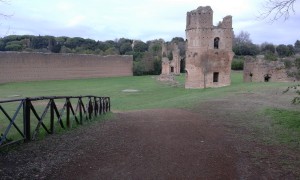

– Appia Antica Roma
Museo delle mura Aureliane – The Aurelian Walls museum – Roman walls 271 AD and 275 AD The walls enclosed all the seven hills of Rome plus the Campus Martius and, on the right bank of the Tiber, the Trastevere district. The full circuit ran for 19 kilometres (12 mi) surrounding an area of 13.7 square kilometres (5.3 sq mi). The construction of the walls was by far the largest building project that had taken place in Rome for many decades, and their construction was a concrete statement of the continued strength of Rome. Aurelian’s construction of the walls as an emergency measure was a reaction to the barbarian invasion of 270; the historian Aurelius Victor states explicitly that the project aimed to alleviate the city’s vulnerability.
Avenitino hill – Colle Aventino – According to Roman tradition, the Aventine was not included within Rome’s original foundation, and lay outside the city’s ancient sacred boundary (pomerium). The Roman historian Livy reports that Ancus Marcius, Rome’s fourth king, defeated the Latins of Politorium, and resettled them there.[9] The Roman geographer Strabo credits Ancus with the building of a city wall to incorporate the Aventine.[10] Others credit the same wall to Rome’s sixth king, Servius Tullius. The remains known as the Servian Wall used stone quarried at Veii, which was not conquered by Rome until c.393 BC, so the Aventine might have been part-walled, or an extramural suburb.
– Basilica di Santa Sabina and Porta lignea di Santa Sabina
is the oldest extant Roman basilica in Rome that preserves its original colonnaded rectangular plan and architectural style. Its decorations have been restored to their original restrained design. Santa Sabina was built by Peter of Illyria, a Dalmatian priest, between 422 and 432[1] near a temple of Juno on the Aventine Hill in Rome. The church was built on the site of early Imperial houses one of which is said to be of Sabina a Roman matron originally from Avezzano in the Abruzzo region of Italy.
Video: Santa Maria della Vittoria in Rome – original music by Adel Karanov private guide and composer
The rose garden – Roseto comunale di Roma
The orange garden – Giardino degli aranci The park offers an excellent view of the city. The garden, as it is today, was designed in 1932 by Raffaele De Vico. The garden, whose name comes from the many bitter orange trees growing there, extends over the area of an ancient fortress built near the basilica of Santa Sabina by the Savelli family between 1285 and 1287, which, in turn, was built over an old castle constructed by the Crescentii in the tenth century.– The rose garden – Giardino delle rose
– Order of Malta square – Sovrano militare ordine di Malta Roma – Piazza Cavalieri di Malta
Pyramid of Cestius – Piramide di Caio Cestio – ancient pyramid in Rome built about 18 BC–12 BC as a tomb for Gaius Cestius, a magistrate and member of one of the four great religious corporations in Rome, the Septemviri Epulonum.
It should first be pointed out that the Pyramid of Cestius was not the only Egyptian-style pyramid in Rome. There was also another pyramid, known as the ‘Pyramid of Romulus’. Incidentally, during the Middle Ages, the Pyramid of Cestius was known as the ‘Pyramid of Remus’, and it was believed that these two pyramids were the tombs of the legendary founders of Rome. The larger ‘Pyramid of Romulus’, located between the Vatican and Hadrian’s Mausoleum (known also as the Castel Sant’Angelo), was dismantled sometime during the 16 th century so that its marble could be used in the construction of St. Peter’s Basilica.
Centrale Montemartini – Museo Montemartini Collection of the musei Capitolini – The best roman art collections and Industrial archaeology in Rome
Best Roman ice cream shop and the old bar pasticceriaclose to the Pyramid Caio Cestio

Special Italian foodshopin Rome

Piazza Venezia – Venezia square It takes its name from the Palazzo Venezia, built by the Venetian Cardinal, Pietro Barbo – later Pope Paul II , alongside the church of Saint Mark, the patron saint of Venice. The Palazzo Venezia served as the embassy of the Republic of Venice in Rome.
Fontana delle Tartarughe – The Fontane delle Tartarughe
(The Turtle Fountain) is a fountain of the late Italian Renaissance, located in Piazza Mattei, in the Sant’Angelo district of Rome, Italy. It was built between 1580 and 1588 by the architect Giacomo della Porta and the sculptor Taddeo Landini. The bronze turtles around the upper basin, usually attributed either to Gian Lorenzo Bernini or Andrea Sacchi, were added in either 1658 or 1659 when the fountain was restored.
Mercati Traiani– Trajan’s Market
is a large complex of ruins located on the Via dei Fori Imperiali. Thought to be the world’s oldest shopping mall, the arcades in Trajan’s Market are now believed by many to be administrative offices for Emperor Trajan.
The shops and apartments were built in a multi-level structure, and it is still possible to visit several of the levels. Highlights include delicate marble floors and the remains of a library.
Campidoglio hill – Piazza del Campidoglio – Collis Capitōlīnus
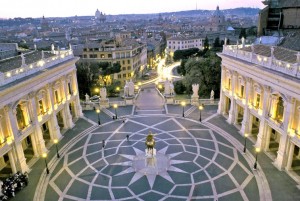 It was the citadel (equivalent of the ancient Greek acropolis) of the earliest Romans. The existing design of the Piazza del Campidoglio and the surrounding palazzi was created by Renaissance artist and architect Michelangelo Buonarroti in 1536–1546. At the height of his fame, he was commissioned by the Farnese Pope Paul III, who wanted a symbol of the new Rome to impress Charles V, who was expected in 1538.
It was the citadel (equivalent of the ancient Greek acropolis) of the earliest Romans. The existing design of the Piazza del Campidoglio and the surrounding palazzi was created by Renaissance artist and architect Michelangelo Buonarroti in 1536–1546. At the height of his fame, he was commissioned by the Farnese Pope Paul III, who wanted a symbol of the new Rome to impress Charles V, who was expected in 1538.
Foro Romano – Roman forum panoramic view
Piazza della Bocca della Verità
The square lies in the ancient area of the Forum Boarium, just in front of the Tiber Island; it takes its name from the Bocca della Verità. The fountain in front of the two temples, called Fountain of the Tritons, released by Carlo Bizzaccheri. Besides the church, dating back to the late Middle Ages, the square houses the Arcus Argentariorum, the Arch of Janus, the Temple of Hercules Victor and the Temple of Portunus, a deity related to the ancient river harbour.
– Tempio di Portuno
Its Ionic order has been much admired, drawn and engraved and copied since the 16th century (see illustration, right). The temple owes its state of preservation from its being converted to use as a church in 872 and rededicated to Santa Maria Egyziaca (Saint Mary of Egypt).
– Tempio di Ercole Vincitore – The Temple of Hercules Victor – Hercules the Winner or Hercules Olivarius – Dating from the later 2nd century BC By 1132 the temple had been converted to a church, known as Santo Stefano alle Carozze (St. Stephen ‘of the carriages).
– Fontana dei Tritoni – This fountain should be distinguished from the similarly named nearby Triton Fountain (Fontana del Tritone) by Bernini. The fountain was completed in 1715 by architect Carlo Francesco Bizzaccheri, during the works for the accommodation of the square in front of the basilica.
Basilica di Santa Cecilia in Tras Tevere
 This basilica (Santa Cecilia) was built by Pope Paschal I during the ninth century; the portico, bell tower and cloisrer in the right wing of the convent were added between the end of the l2tl’l and early 13th centuries; as early as 1540 the church began to be the object of numerous reStoration operations up to the most radical one of 1724, executed at the will of cardinal Francesco Acquaviva. The monumental entrance is attributed to Ferdinando Fuga (1741-1742) The portico in front of the facade (somewhat retouched during the 18th century) srill has its ancient columns, the original architrave with its mosaic decorations, tombstones and medieval fragments. Inside there are three naves: the central nave, with its lowered barrel vault terminating in an apse, is separated from the side aisles by pilasters that incorporate the ancient columns. The tabernacle by Arnolfo di Cambio (1293) at the center of the presbytery is a true masterpiece of Gothic architeCtute and sculpture. Among the marble Statues, Saint Cecilia by Stefano Madetno (1600), portrayed in the act of recognition, is particularly worthy of admiration. The L’nivma/firdgemem frescos by Pietro Cavallini in the Nuns’ Choir, built on the internal face of the facade, are considered to be his masterpiece and the mosr significant work of Roman painting prior to Giotto.
This basilica (Santa Cecilia) was built by Pope Paschal I during the ninth century; the portico, bell tower and cloisrer in the right wing of the convent were added between the end of the l2tl’l and early 13th centuries; as early as 1540 the church began to be the object of numerous reStoration operations up to the most radical one of 1724, executed at the will of cardinal Francesco Acquaviva. The monumental entrance is attributed to Ferdinando Fuga (1741-1742) The portico in front of the facade (somewhat retouched during the 18th century) srill has its ancient columns, the original architrave with its mosaic decorations, tombstones and medieval fragments. Inside there are three naves: the central nave, with its lowered barrel vault terminating in an apse, is separated from the side aisles by pilasters that incorporate the ancient columns. The tabernacle by Arnolfo di Cambio (1293) at the center of the presbytery is a true masterpiece of Gothic architeCtute and sculpture. Among the marble Statues, Saint Cecilia by Stefano Madetno (1600), portrayed in the act of recognition, is particularly worthy of admiration. The L’nivma/firdgemem frescos by Pietro Cavallini in the Nuns’ Choir, built on the internal face of the facade, are considered to be his masterpiece and the mosr significant work of Roman painting prior to Giotto.
Video: Santa Maria in trastevere basilica in Rome 3D – Music by Adel Karanov guide in Rome
Janiculum Hill – Colle del Gianicolo – Rome panoramic view
Tempietto del Bramante – Tempietto di San Pietro in Montorio
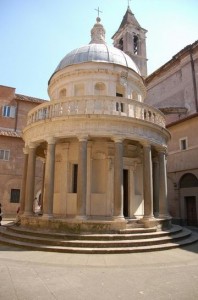
 1502 Temple of Bramante is considered one of the first great building of the high Reinassence. It is evidently based on the study of the rules of harmony of the Roman Vitruvius, who advised the use of the Doric order of columns for buildings dedicated to masculine divinitics or mythological figures famous for their sum and courage. The architeCt Bramante did in Fact use the Doric order for the tempietto. giving it an air of rigour and economy, which is also due to limited use of excessive decoration and the sober harmony of the volumes.
1502 Temple of Bramante is considered one of the first great building of the high Reinassence. It is evidently based on the study of the rules of harmony of the Roman Vitruvius, who advised the use of the Doric order of columns for buildings dedicated to masculine divinitics or mythological figures famous for their sum and courage. The architeCt Bramante did in Fact use the Doric order for the tempietto. giving it an air of rigour and economy, which is also due to limited use of excessive decoration and the sober harmony of the volumes.
– Fontana Paolina o Fontana dell’Acqua Paola
The Roman fountains video – Original music by Adel Karanov RusRim.com Art guides in Rome
Roman Elegies I
Tell me you stones, O speak, you towering palaces!
Streets, say a word! Spirit of this place, are you dumb?
All things are alive in your sacred walls
Eternal Rome, it’s only for me all is still.
Who’ll whisper to me, at what window
Will I see the sweet thing who’ll kindle me now, and quicken?
Already I guess the ways, walking to her and from her,
Ever and always I’ll go, while sweet time slips by.
I’m gazing at church and palace, ruin and column,
Like a serious man making sensible use of a journey,
But soon it will happen, and all will be one vast temple,
Love’s temple, receiving its new initiate.
Though you’re a whole world, Rome, still, without Love,
The world isn’t the world, and Rome can’t be Rome.
— — — — —
CARAVAGGIO IN ROME
San Luigi dei Francesi – Privat tour – Rome car excursions
Thanks to the mediation of Cardinal Del Monte from the July of 1599 to that of 1600, Caravaggio painted the two side canvases for the chapel of Cardinal Contarelli in San Luigi dei Francesi, his first public commission. The Calling and Martyrdom of Saint Matthew were both demanding in terms of the depiction of a story in action and the numerous figures. The symbolic role of the light, coupled with the natural illumination of the chapel, lends unity to the whole. With these canvases Caravaggio brings contemporary reality into a sacred scene and into a church chapel for she first time. Characters dressed in the current style participate in the sacred event as they go about their daily life, intent on tavern games. The first canvas to be finished was the Calling. Caravaggio constructs the scene around the gesture of Christ, who points towards Matthew and whose hand position is mirrored by the latter’s. The two groups are unified by the shaft of light, whose origin is outside the field of vision, above the head of Jesus. The light is both divine .d natural and also serves as an efficacious stylistic expedient to emphasise the evident contrast between the modern clothes of Matthew and his companions and the few divine attributes of the apostle, who is barefoot and wrapped in a large cloak of antique style. In the use of the Martyrdom, the focal point of the scene is the executioner, who is in the act of striking the martyr. The other characters are placed around the central figure, gradually going further back into the bare space which is the scene of the action. Caravaggio freezes the dramatic moment before the death by means of the light. This is concentrated on the naked body of the executioner poised to strike and on the angel who proffers the palm of martyrdom to the saint. Once it was placed on the altar of the chapel, the altarpiece of Saint Matthew and the Angel, which was done in three and a half months in 1602, was, according to Bellori: otaken away by the priests, who said that the figure had



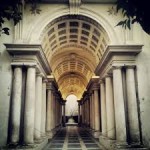



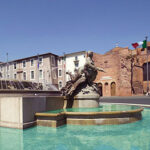


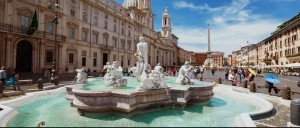




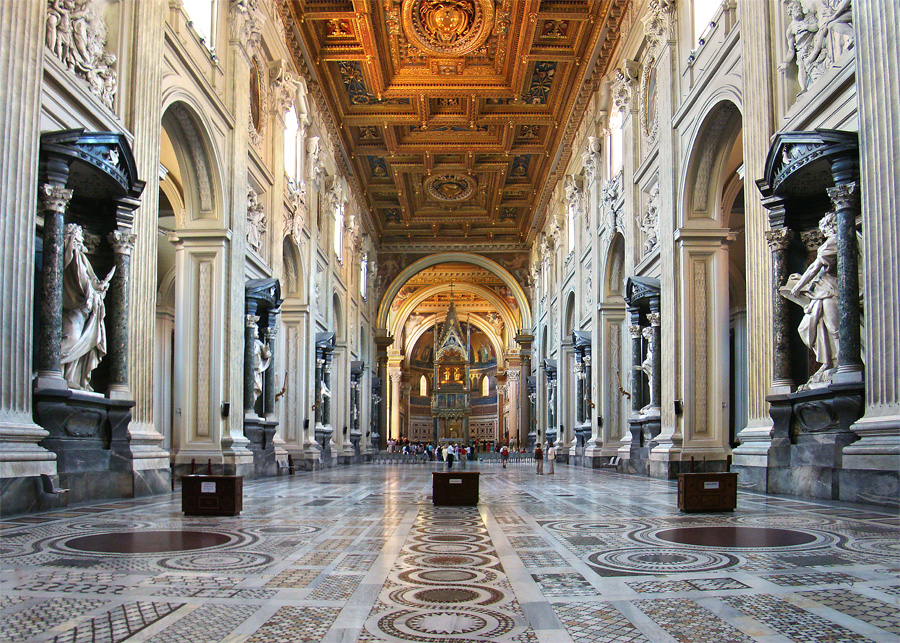



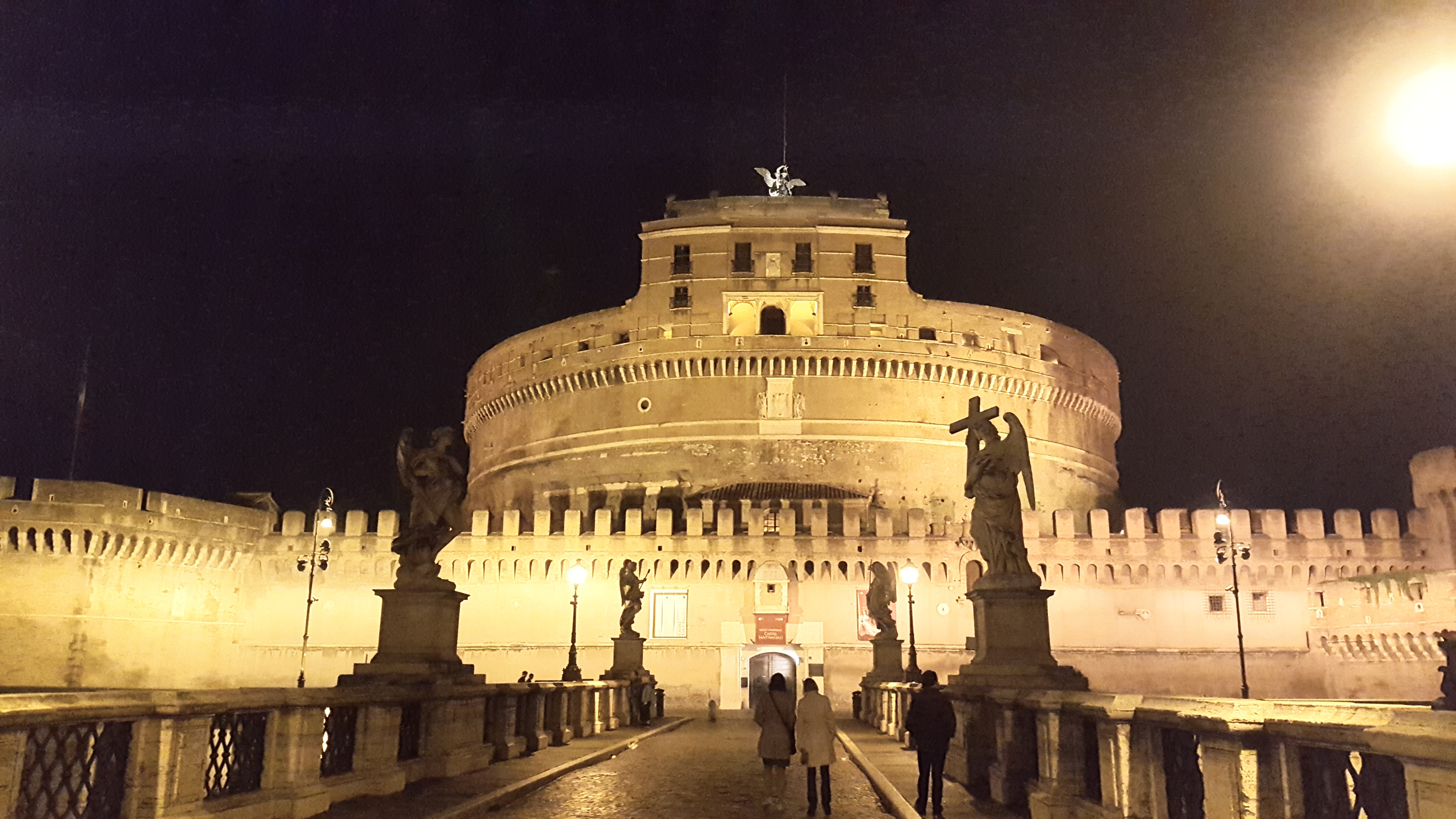

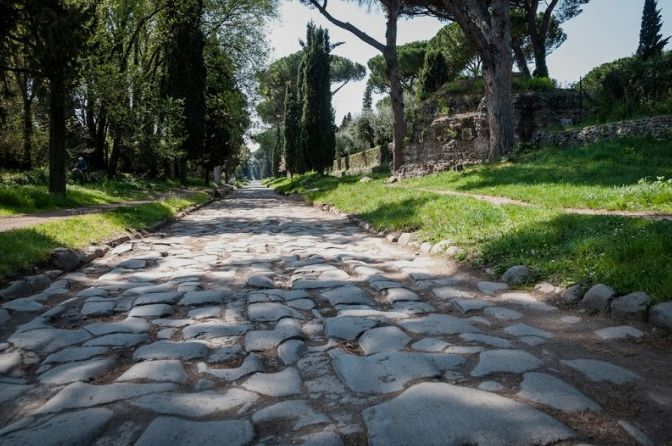
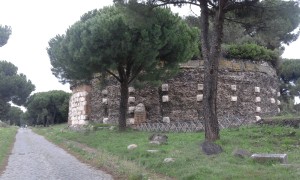

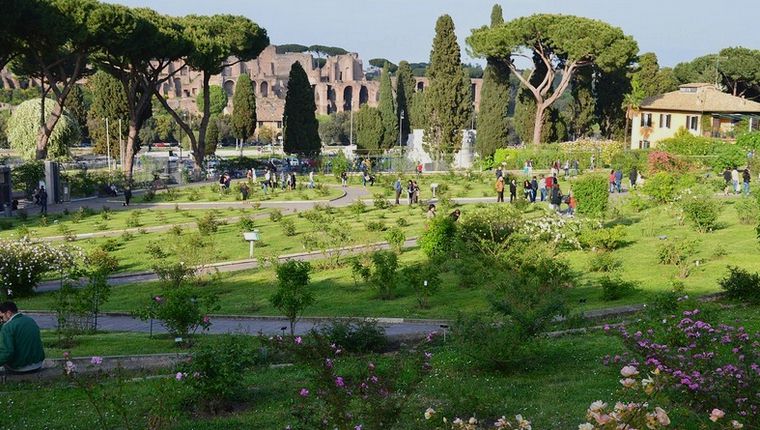



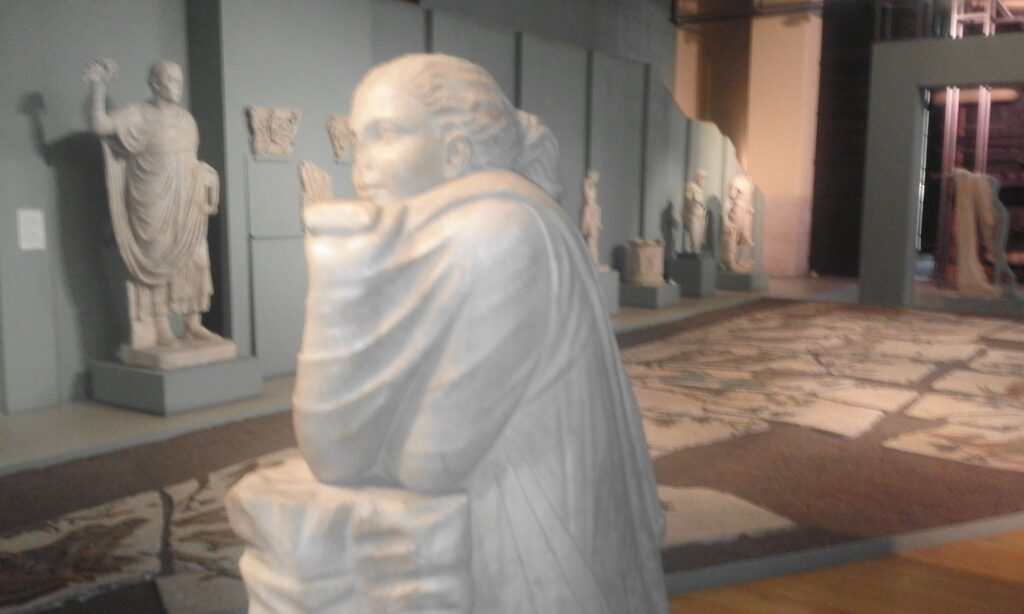
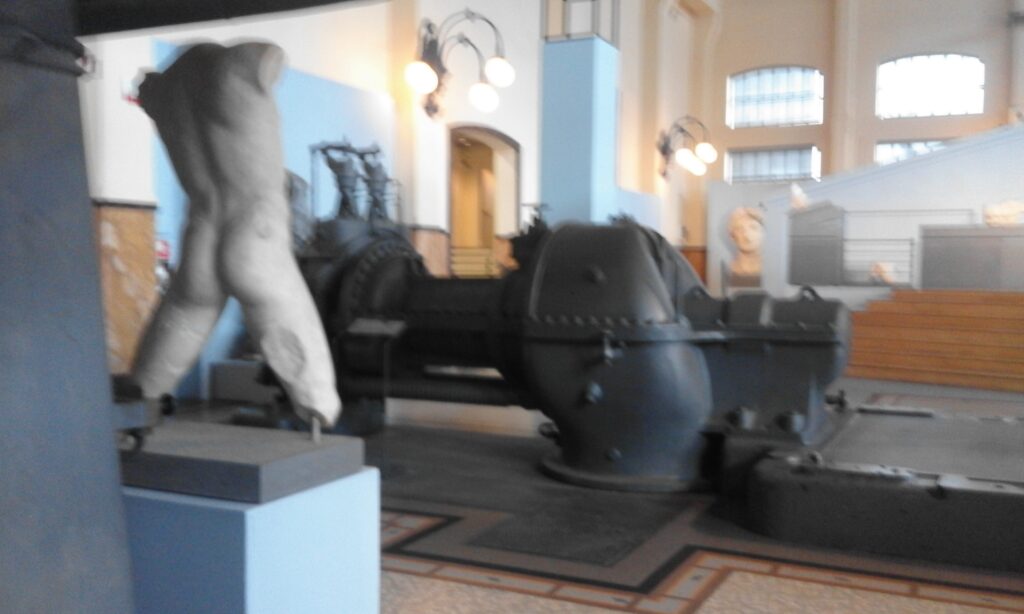
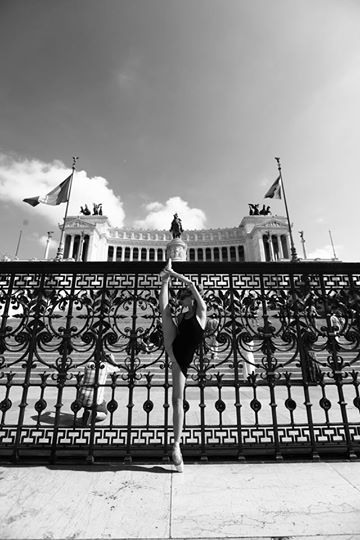
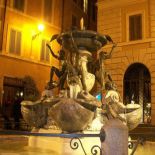
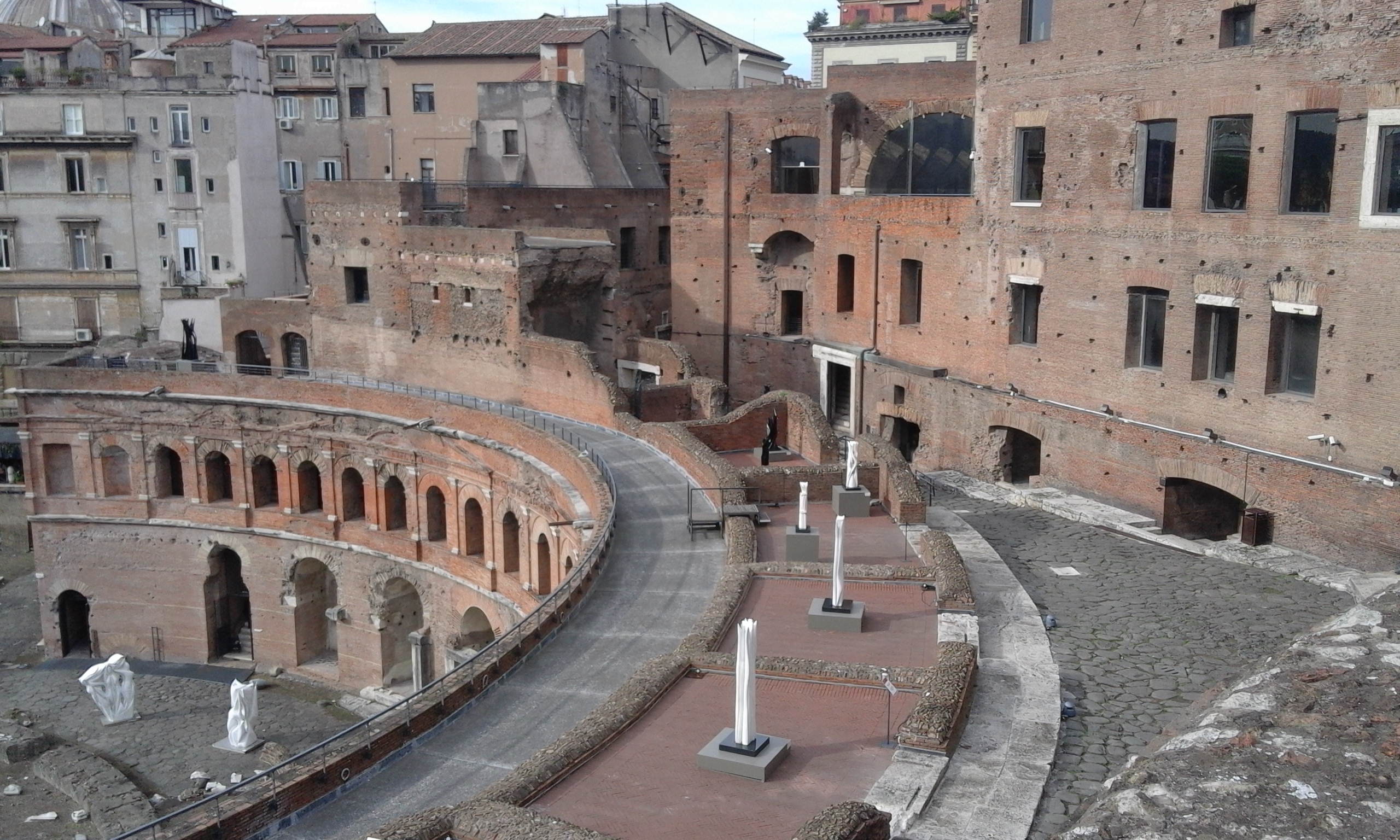

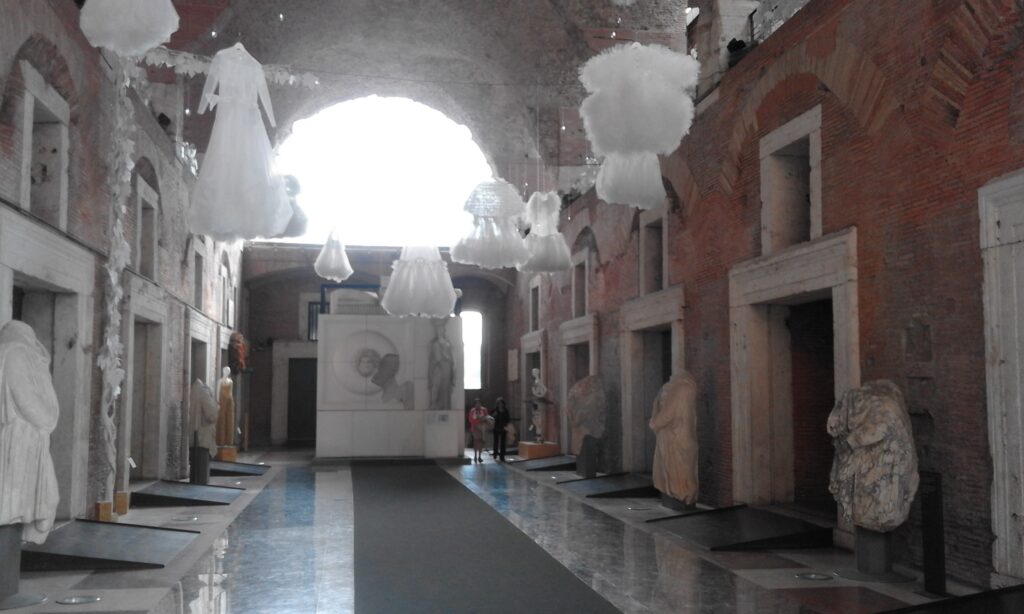
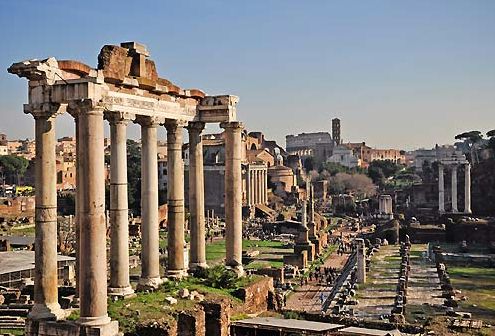






 Русский
Русский Български
Български Français
Français